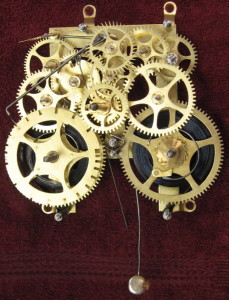 The reason I’m spending so much time walking through the Do/Reflect/Analyze/Generalize (D.R.A.G.) process is because it’s the heart and soul of good interactive presenting. It’s also a process that most people aren’t comfortable with. It is terribly unfamiliar. Just like writing with your non-dominant hand (like I wrote about a few posts ago) it’s so uncomfortable that you would only do it if you were forced to. If, say, you broke your dominant hand, for example.
The reason I’m spending so much time walking through the Do/Reflect/Analyze/Generalize (D.R.A.G.) process is because it’s the heart and soul of good interactive presenting. It’s also a process that most people aren’t comfortable with. It is terribly unfamiliar. Just like writing with your non-dominant hand (like I wrote about a few posts ago) it’s so uncomfortable that you would only do it if you were forced to. If, say, you broke your dominant hand, for example.
My first step, then, might be to convince you that the dominant speaking/presenting style so many of us are familiar with is broken. Lecture style speaking is the least effective yet most used. Discovery learning and full audience participation is far more effective yet not used nearly often enough. Here’s why and how to overcome it…
Let’s start at the beginning. The activity. If you’re not the creative sort coming up with an activity that can be used to open your presentation can be quite challenging (you might think impossible). But there are lots of books on games available out there. Check out this one and some of the other books suggested on that page. No need to reinvent the wheel. Find a simple game to play that can be manipulated to fit the point you’re trying to make. I’ve said it before and expect I will again, the game doesn’t matter. Any activity will do.
I’ve walked you through how D.R.A.G. works so I’m not doing that again. Instead I will tell you that it’s a process you can trust. But you have to be willing to let your presentation be an adventure. It may feel like you’re giving the audience control over your material but that’s not true. You are always in control. You get to pick and choose which of the audience responses you’ll use. The fact is, the material you get from the audience actually makes your presentation much, much better. If you don’t trust that it won’t work. And trust is built on experience so there’s no way to get comfortable with this presenting style without doing it.
And as with anything of value you have to go all in. No half measures or trying pieces of this to see how they work. You must do every step. I’ve seen people shed the game because it seemed childish but without the game you don’t have a hook for the questions. I’ve seen people play the game then go right into their standard presentation. This is just confusing because without the chance to debrief the game is meaningless. Referencing the game in your talk might mitigate this a little, but it still leaves the game hanging out there as a superfluous anomaly not an important part of the presentation.
Each part of D.R.A.G. is strategically placed to engage the brains of your audience. They have to think about their feelings, reactions, processes, planning and then apply all those things more broadly. They must consider how they interact with others and what the larger implications are in the world around them. Human beings are the only creatures on earth who have the capacity to think about how we think. An interactive presentation takes advantage of this unique ability.
How do you think about life? What do you think about yourself? How does what you tell yourself about others impact how you relate to them? What does your opinion of yourself cause you to do in work and social settings? How might you behave differently if you were aware of your inner monologue?
Once you get people contemplating these deeper thoughts and engaged in a discovery process the learning that happens is phenomenal. The connections made stick with them and your presentation is unforgettable. If you trust the process and present it with confidence and energy you’ll get amazing results.
Leave a Reply